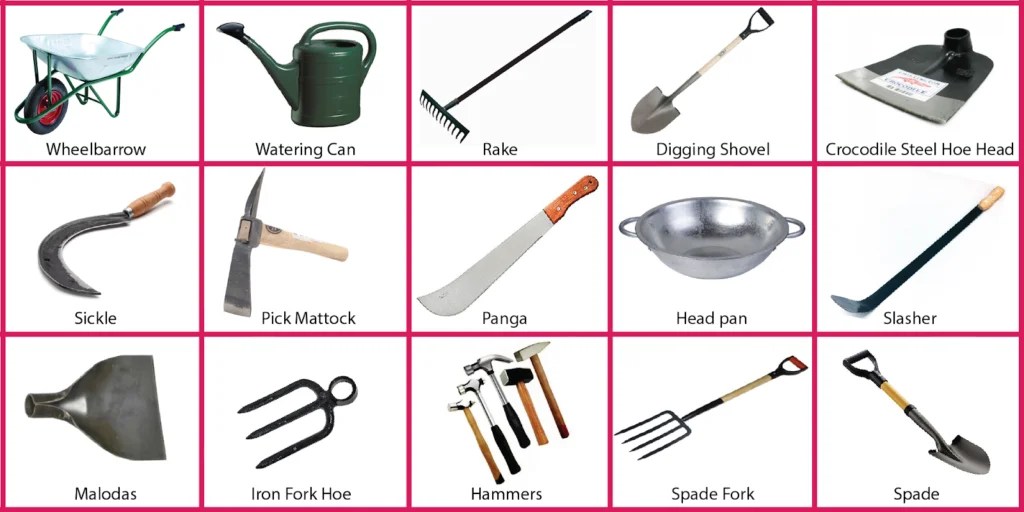Agriculture is the backbone of many economies worldwide, providing food, fiber, and raw materials for various industries. To ensure efficiency and productivity in farming, a wide array of agriculture tools are employed. Understanding the names and functions of these tools is essential for both novice and experienced farmers. With the right tools at hand, agricultural tasks can be completed with greater ease, ultimately leading to higher yields and better crop quality.
From traditional hand tools to advanced machinery, the agriculture tools names represent a vast category that spans different farming practices and techniques. Each tool plays a crucial role in the cultivation, maintenance, and harvesting of crops. In this article, we will explore some of the most commonly used agriculture tools, their names, and their functions, helping you to better understand their importance in the agricultural landscape.
Farmers today are increasingly integrating technology into their practices, which has led to the development of innovative tools designed for precision agriculture. However, traditional tools remain indispensable, especially in small-scale farming and organic practices. This article will provide an overview of some essential agriculture tools names, ensuring that every farmer, whether seasoned or new, is equipped with the knowledge needed to succeed in the field.
What Are the Essential Agriculture Tools Names?
When it comes to farming, knowing the essential agriculture tools names can significantly enhance a farmer's effectiveness. Here are some of the most important tools:
- Shovel - Used for digging and moving soil.
- Hoe - Useful for weeding and cultivating the soil.
- Rake - Helps in leveling soil and collecting debris.
- Plow - Prepares the soil for planting by turning it over.
- Seed Drill - Allows for precise planting of seeds.
- Harvester - Essential for gathering mature crops.
- Sprayer - Used for applying fertilizers and pesticides.
- Tiller - Breaks up and aerates the soil.
Why Are Agriculture Tools Names Important?
Understanding agriculture tools names is vital for several reasons:
- It helps in selecting the right tool for the job, ensuring efficiency.
- Knowledge of tools fosters better maintenance practices, extending their lifespan.
- It aids in effective communication between farmers, suppliers, and agricultural experts.
- Awareness of the latest tools can lead to the adoption of innovative farming practices.
What Are Some Traditional Agriculture Tools Names?
Traditional agriculture tools have stood the test of time and remain relevant today. Here are a few noteworthy names:
- Sickle - A curved blade used for harvesting crops.
- Scythe - A long-handled tool for mowing grass or grain.
- Pitchfork - Used for lifting and pitching loose material like hay.
- Hand Trowel - A small tool for digging in small areas.
Which Modern Agriculture Tools Are Commonly Used?
Modern agriculture has seen the introduction of advanced machinery that enhances productivity. Some essential modern tools include:
- Tractor - A powerful vehicle used to pull various implements.
- Combine Harvester - A machine that efficiently harvests crops.
- Drone Technology - Used for monitoring crop health and applying fertilizers.
- GPS Technology - Enhances precision in planting and harvesting.
How Do Agriculture Tools Names Vary by Region?
Agriculture tools names can vary significantly depending on the region and the type of farming practiced. For instance:
- In Asia, tools like the Khurpi (a hand hoe) are common.
- In Europe, Furrow Plows have traditional significance.
- In Africa, tools such as the Matchet are widely used.
What Are the Benefits of Using the Right Agriculture Tools?
Utilizing the appropriate agriculture tools can lead to various benefits:
- Increased Efficiency: Reduces labor time and effort.
- Improved Crop Yields: Enhances soil health and crop management.
- Reduced Waste: Minimizes resource wastage during farming processes.
- Cost-Effectiveness: Proper tools can lower long-term operational costs.
How Can Farmers Maintain Their Agriculture Tools?
Maintaining agriculture tools is crucial for their longevity and effectiveness. Here are some maintenance tips:
- Clean After Use: Remove dirt and debris to prevent rust.
- Sharpen Blades: Keep cutting tools sharp for efficiency.
- Store Properly: Keep tools in a dry, safe place to prevent damage.
- Inspect Regularly: Look for signs of wear and replace parts as needed.
Conclusion: The Importance of Familiarity with Agriculture Tools Names
In conclusion, knowledge of agriculture tools names is essential for anyone involved in farming. Whether utilizing traditional hand tools or modern machinery, understanding the names and functions of these tools can lead to greater efficiency and productivity in agricultural practices. By familiarizing oneself with the various tools available, farmers can make informed decisions, ultimately enhancing their success in the field.



ncG1vNJzZmixn6PAtr7IZqWeq6RjsLC5jq2pnqaUnruogI6anquhk6q5tcHRnmStp5%2BhwG66wKacrGaYqbqt